These Pictures Will Help You ID the Most Common Bug Bites and Their Symptoms

Whether you first notice a sharp pinch, a nagging itch, or a painful sting, discovering a brand-new bug bite—sometimes instantly, but often only days later—is no fun. Some ache, some beg to be scratched, and the worst of the bunch do both. And often, you haven’t the slightest clue which critter could have been the culprit. If you have a nasty bite you can’t attribute to a specific house bug or outdoor pest, we’re sharing bug bite pictures to help you properly identify the offender, and how to best treat the wound.
Unfortunately, experience shows us that almost all bug bites look strikingly similar. In fact, experts say that it’s hard to positively identify the offending insect unless you actually catch it in the act. Everyone’s immune system reacts to bug bites and stings differently, producing unique symptoms in each victim, from swelling to itching to pain.
Mild itchiness and pain are normal reactions to insect bites and stings, but if you experience anything more severe than these, including shortness of breath and swelling away from the original site, you should contact a doctor or seek medical attention immediately. It’s possible you could be having a severe allergic reaction, suffering from an insect-borne disease, or experiencing an infection.
You may notice that bug bites pick up in the summer, when you’re outside more often and exposing more skin, but they can occur any time of year—especially if you happen to be preyed upon inside of your home. (Spiders, bed bugs, and fleas don’t hibernate in the winter, sadly.) There are ways to deter the critters from coming your way, especially if you use insect repellent or bug spray, but there’s no perfect solution to ward off the pests.
Although it’s not always possible to know which bug is to blame for your latest bite (or bites), you can often get a pretty good idea based on your skin, the site of the sting, and a few other clues. Ready to get to the bottom of your bug bite mystery? Here are pictures of the most common bug bites to keep on your radar.
Tick Bites
What they look like: The best way to ID a tick bite is to find one of the insects attached to you—and they can linger for three to six days as they feed on your blood. Some leave a red spot about the size of a dime, but not everyone exhibits this. Tick bites often occur on warmer parts of the body, like the hairline, armpits, behind the knees, and groin.
Symptoms to note: Tick bites are pretty painless and a bit itchy at first, but dangerous, with more serious symptoms appearing days to weeks after a bite. A bullseye rash (pictured here) signals Lyme disease, but other tick-borne illnesses include ehrlichiosis, anaplasmosis, and tularemia, although the risk for each varies depending on the tick’s species.
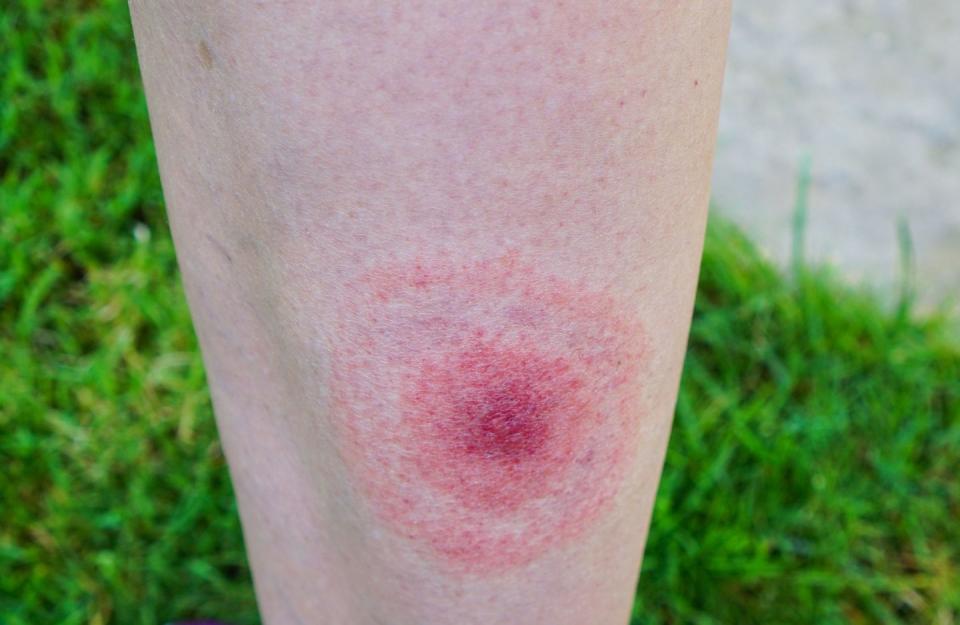
Spider Bites
What they look like: If you’ve got two tiny puncture marks on your skin (or see a spider crawling away), you are probably dealing with a spider bite. Redness and swelling at the site of the bite are also common. Thankfully, most spiders bite only when provoked.
Symptoms to note: Innocuous spider bites often cause mild pain (like a bee sting) and even itching. But watch out for brown recluses and black widows: The former can cause necrotic lesions, while the latter can bring on muscle spasms, tremors, and nausea. Seek medical help if you suspect a bite from either of these spiders.
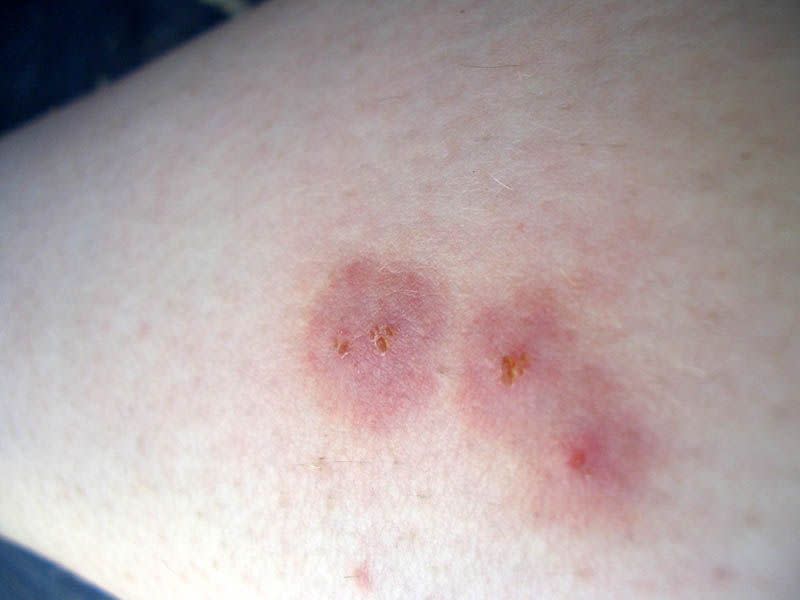
Mosquito Bites
What it looks like: Mosquito bites present as small, puffy, round bumps that are lighter or redder than the surrounding skin. Bites often center around ankles, hairlines, and the backs of knees and necks, and they’re likely to be isolated—not part of a cluster (unless you were hanging out in prime mosquito territory during dawn or dusk).
Symptoms to note: As you most likely know, mosquito bites are painless at first, then very, very itchy. Some people suffer from “skeeter syndrome,” which causes the bites to grow into painful, swollen welts. Mosquitoes do carry a risk of certain diseases like West Nile and Zika, so monitor for cold- or flu-like symptoms after a bite.
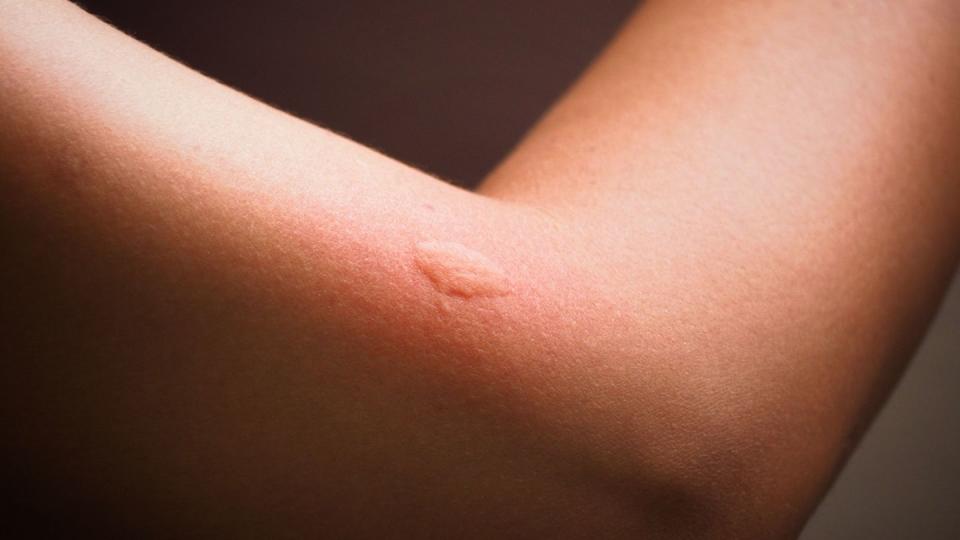
Bed Bug Bites
What they look like: Often confused with mosquito bites, bed bug bites are small, red, puffy bumps that appear in lines or clusters, usually three or more. They can have distinct red marks at their center, and they often appear on exposed skin that touches the bed at night, including the arms, neck, or trunk of the body. With close examination of your room, you can often find the bugs (or their droppings) in your mattress, particularly around the corners, the head end, and the cord that encircles it.
Symptoms to note: Bed bug bites aren’t too painful, but they can be very itchy and swollen. The parasites don’t spread diseases like ticks do; however, they’re difficult to remove and won’t stop biting you until they’re eradicated from your home.
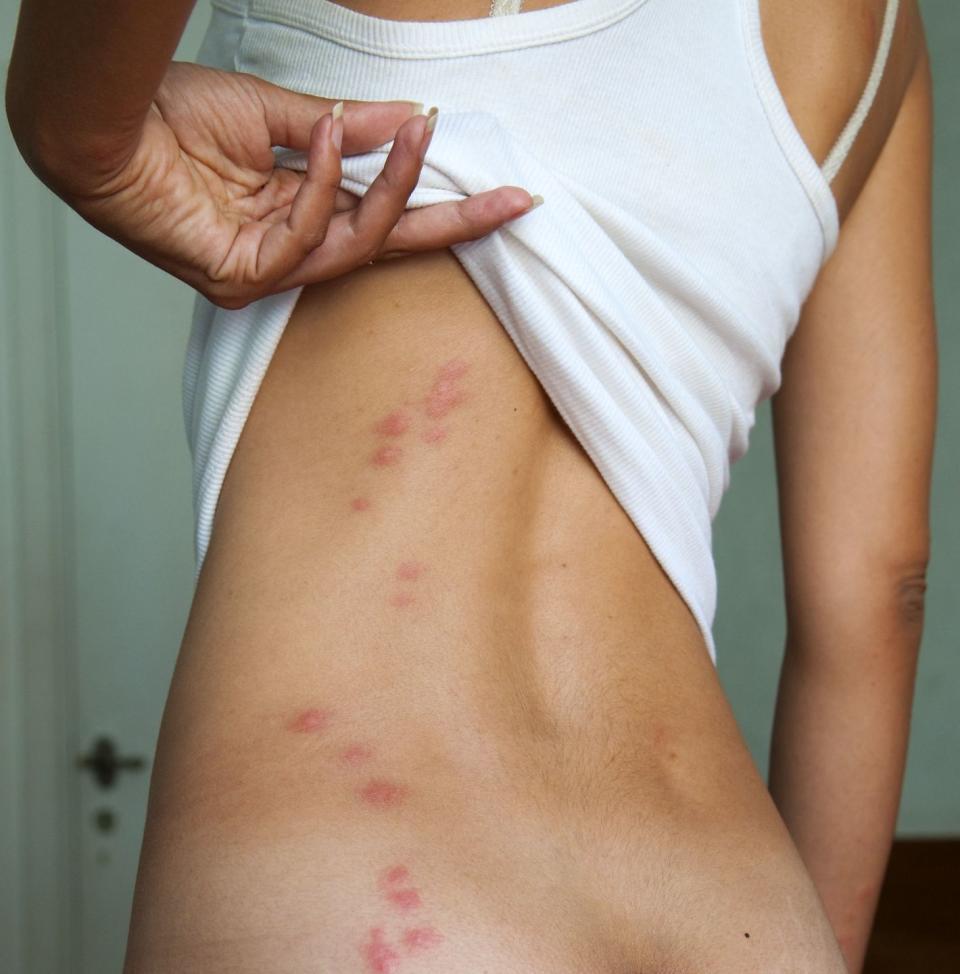
Head Lice Bites
What they look like: Another too-close-for-comfort pest are head lice, which leave patches of red, abraded spots on the scalp and surrounding skin (like this one pictured). Although their bites are small, the body’s reaction to them makes them grow. You might not even see the bites first—the initial giveaway might be tiny lice eggs (a.k.a. nits) first.
Symptoms to note: Lice bites are quite itchy, and an infestation can even feel like something is moving or tickling in the hair (which, to be honest, is what’s happening). This can actually cause trouble sleeping. Sores caused by scratching can also develop easily. The only solution is getting rid of the bugs ASAP.
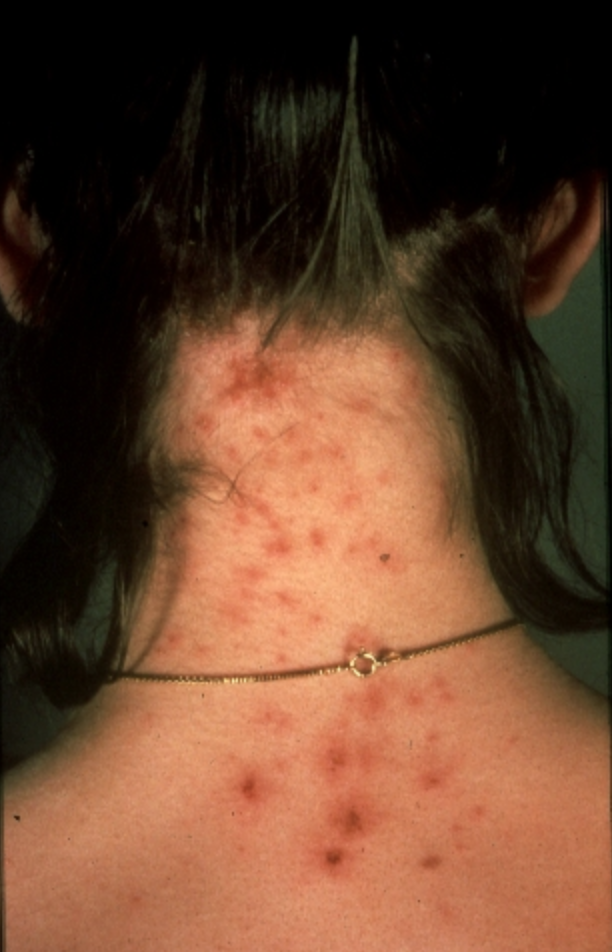
Flea Bites
What they look like: Like bed bug or lice bites, flea bites are red bumps that appear in lines and clusters. They’re distinctively small, and they often have reddish halos surrounding them. Fleas tend to bite around the ankles and in warm places like the knees, groin, and armpits—but honestly, they usually prefer your pets.
Symptoms to note: Flea bites are very itchy, and they might even become sore or painful, causing a rash around the affected skin. Scratching the bites could cause these symptoms to worsen or even lead to infection.
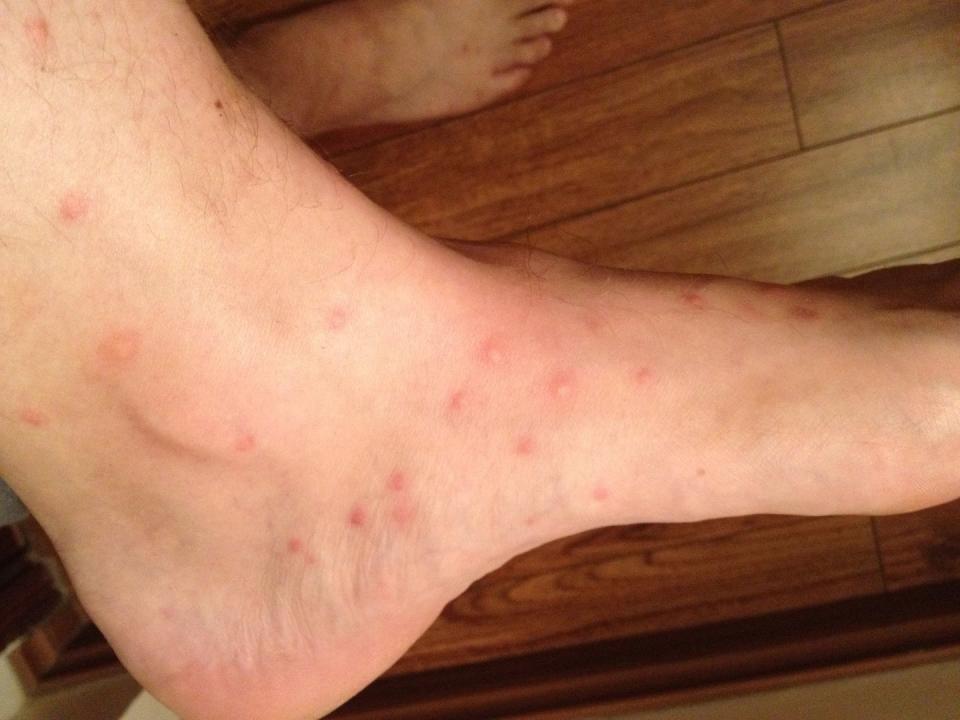
Fly Bites
What it looks like: There are a few major fly species that bother people in the United States, including deer, horse, stable, and black flies. Bites vary by species and person, but they’re often raised, red bumps or welts. Some might even bleed. Blackfly bites also might swell. (Pictured here is a horse fly bite.)
Symptoms to note: More often than not, fly bites are going to hurt. After the pain subsides, some may also become itchy, but most fly bites are innocuous. In rare cases, deer flies can pass on the bacterial disease tularemia (which can cause a painful ulcer), and blackfly bites can lead to a flu-like condition called “blackfly fever.”

Sand Fly Bites
What they look like: Sand fly bites are distinct from those of other flies. They can appear alone, but often present in groups of small, red bumps or blisters.
Symptoms to note: Sand fly bites are generally painful and may start to itch. In certain parts of the world—including the tropics, subtropics, and southern Europe–they can transmit cutaneous leischmaniasis, a parasitic infection that causes skin lesions and ulcers.
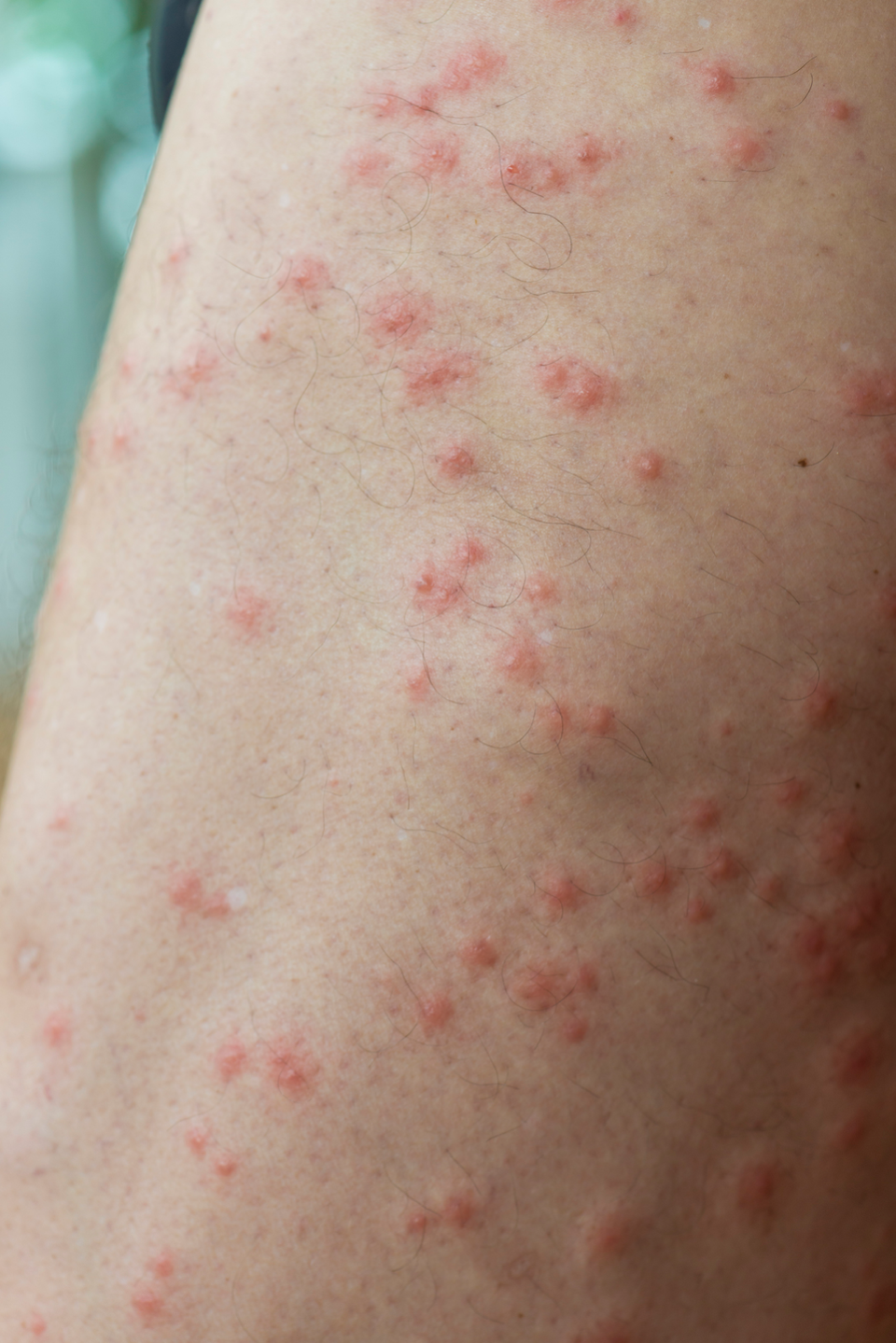
Chigger Bites
What they look like: Also known as berry bugs or harvest mites, chiggers are those tiny, red mites that are almost invisible to the naked eye. Their bites take the form of flat, red patches or raised, red bumps, and they sometimes might even become blisters or pustules. Chiggers often bite the ankles, wrists, thighs, groin, and waist.
Symptoms to note: Contrary to popular belief, chiggers don’t burrow into your skin or suck blood—but that doesn’t make their bites any less itchy. The severe discomfort can last up to two weeks, but mites don’t spread disease, at least within the United States.
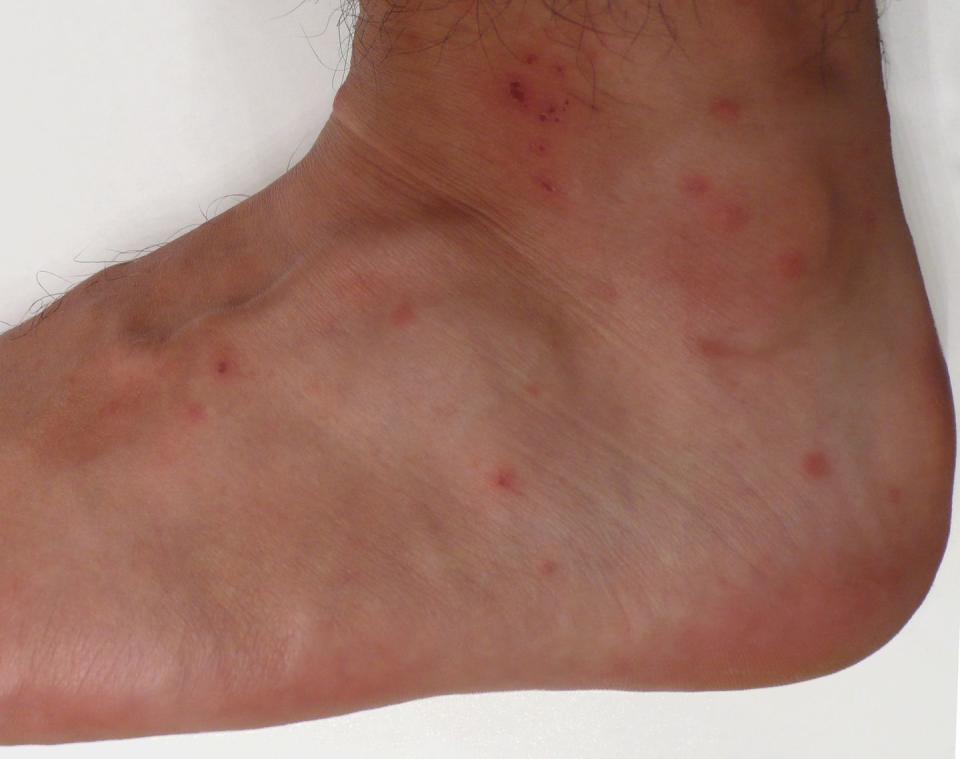
Ant Bites and Stings
What they look like: Some ants can bite and sting. If you’re dealing with an aggressive one, it’s probably a fire ant, which are more common in the southern states. Fire ants, because they’re so lovely, will actually bite you so they can hold themselves against your body—and then proceed to sting you with their backend. The result can cause a pimple-like pustule, although some people don’t react at all.
Symptoms to note: Fire ant stings are very painful due to the potency of their venom, and since ants don’t lose their stingers when they attack, you’ll probably end up with multiple wounds. The inflammation and pain can take days or weeks to go away, and sometimes checking in with a doctor is needed.
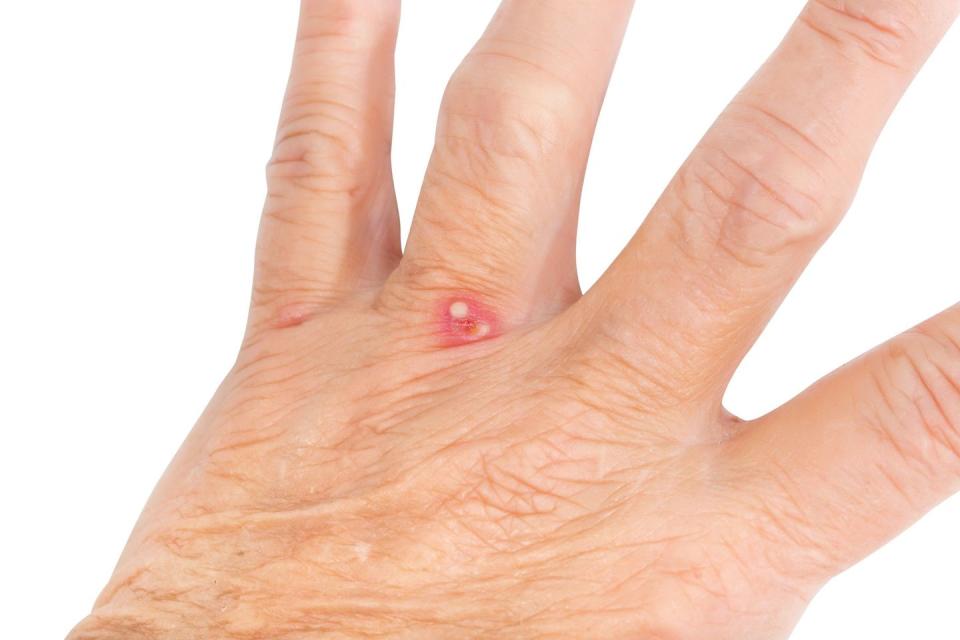
Bee Stings
What it looks like: Bee stings vary from person to person. Some people exhibit only a small, light spot, while others get a larger, red welt. There also might be a white spot at the center where the sting occurred. In the case of a honey bee sting, the barbed stinger is often still attached—which will keep pumping venom into your body until you remove it.
Symptoms to note: Bee stings cause moderate pain, which should subside within a few hours. All insect stings can cause life-threatening allergic reactions, and bee stings are no exception. Monitor your symptoms after a sting and call 911 if you notice the signs of anaphylaxis, including swelling beyond the sting site, tightness in the chest or throat, or trouble breathing.
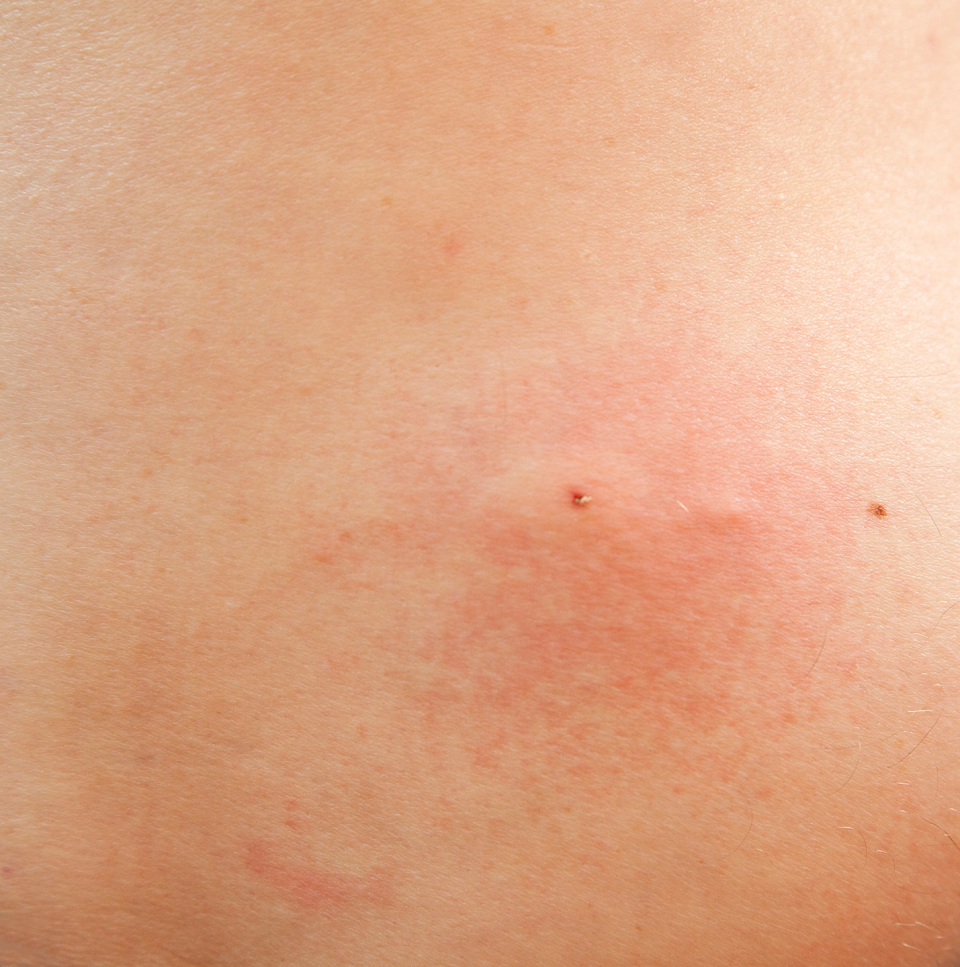
Scabies
What it looks like: Scabies is a skin infestation caused by a mite. Untreated, these microscopic mites can live on your skin for months. They reproduce on the surface of your skin and then burrow into it to lay eggs. This causes an itchy, red rash to form on your skin. The extremely itchy rash may be pimply, made up of tiny blisters, or scaly.
Symptoms to note: After the initial exposure to scabies, it can take two to five weeks for symptoms to appear. If you've had scabies before, the symptoms usually develop more quickly, often as soon as one to four days after exposure. The hallmark symptoms of scabies include a rash and intense itching that gets worse at night. Continuous scratching of the infected area can create sores that can become infected. If this occurs, reach out to your doctor; additional treatment with antibiotics for the skin infection may be needed.
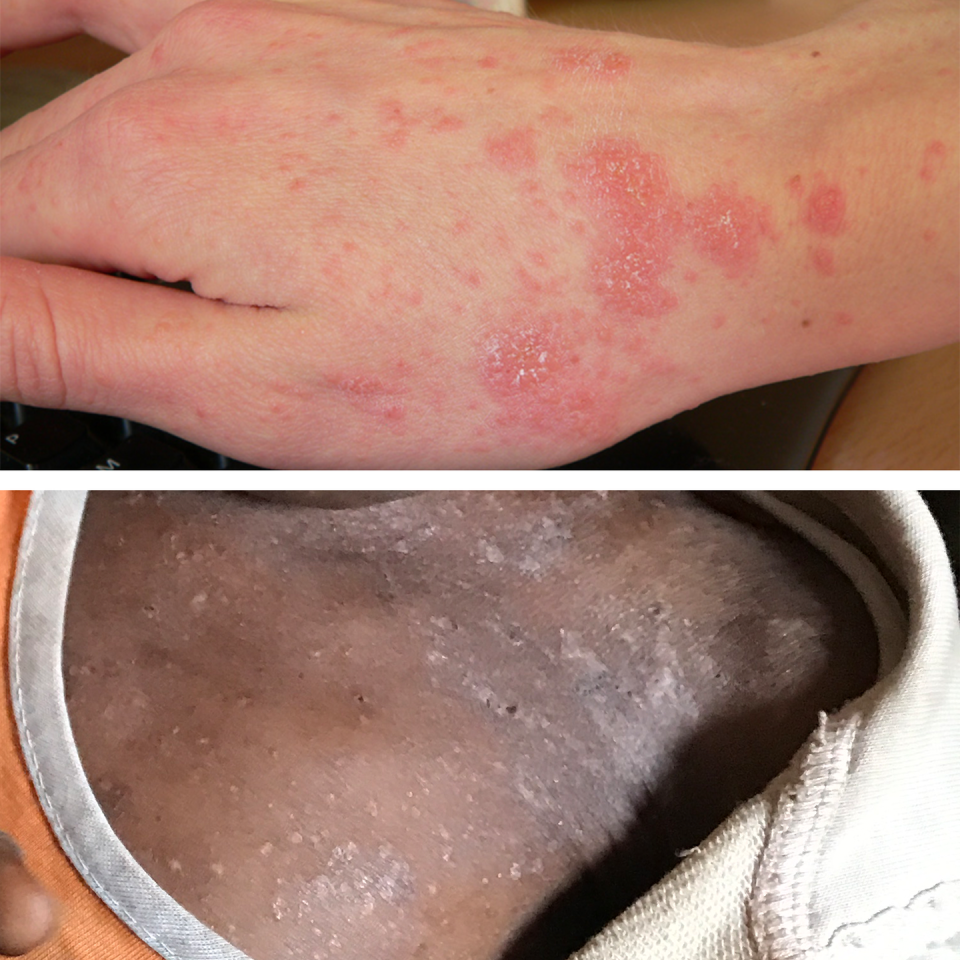
Wasp Stings
What it looks like: Wasp stings can be uncomfortable, but most people, without wasp sting allergies, recover quickly and without complications. Typical wasp stings present as sharp pain, redness, swelling, and itching or burning at the sting site. Often, a raised welt will appear around the sting site. A tiny white mark may be visible in the middle of the welt where the stinger punctured your skin. Usually, the pain and swelling recedes within several hours of being stung.
Symptoms to note: More concerning reactions to wasp stings, that may indicate some level of allergy to the venom, include extreme redness and swelling that increases for two or three days after the sting. Nausea and vomiting can also occur. Most times, these reactions will subside on their own in about a week. You should let your doctor know right away if you have a more concerning reaction after a wasp sting.
Some people with more severe allergies to wasp stings may go into anaphylactic shock, which can be life threatening. If you experience any severe swelling of the face, lips, or throat; hives or itching in areas of the body not affected by the sting; breathing difficulties, such as wheezing or gasping; loss of consciousness; nausea or vomiting; or weak or racing pulse, seek emergency medical help immediately.
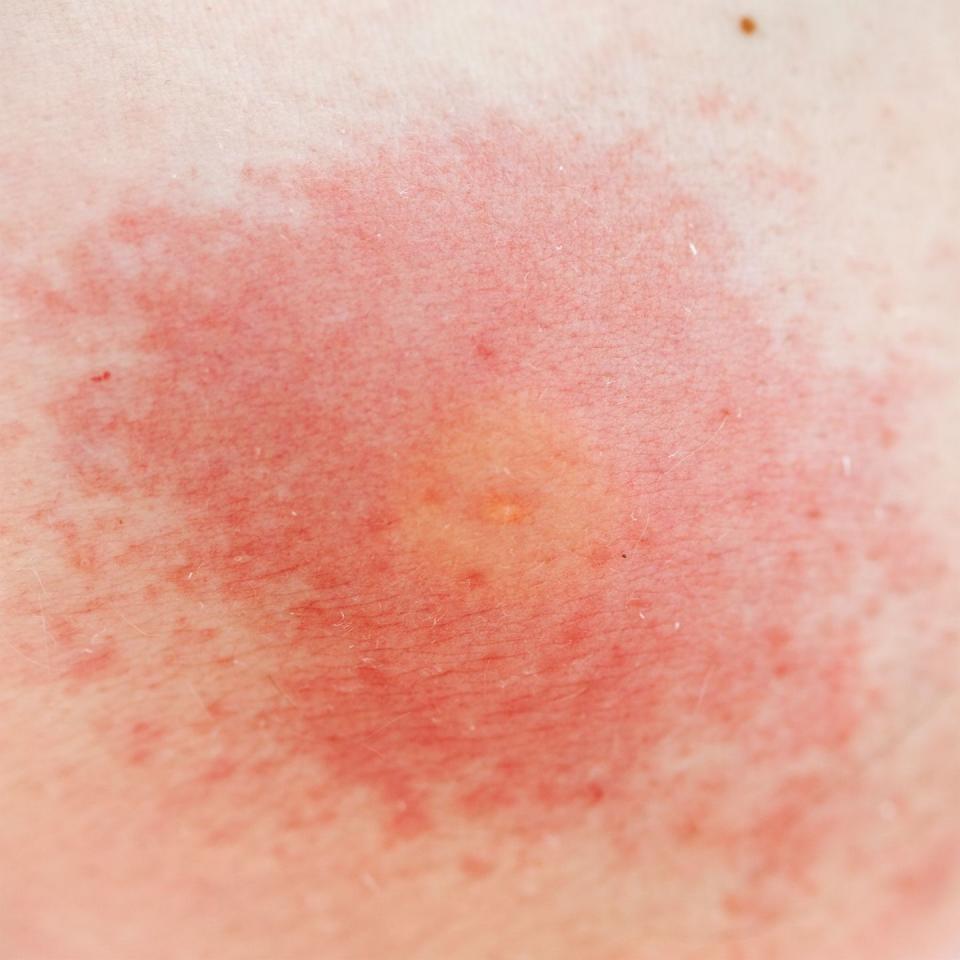
Yellow Jacket Stings
What it looks like: Similar to wasps and bees, when a yellow jacket stings you, it pierces your skin with its stinger and injects a poisonous venom that causes sudden pain. After being stung, you may also experience swelling or redness around the sting for a few hours. Fatigue, itching, and warmth around the injection site are also common symptoms people experience after a sting.
Symptoms to note: Some symptoms warrant emergency medical attention. These may include: coughing or wheezing; problems breathing or swallowing, or having tightness in your throat; changes to your skin, such as breaking out into hives; feeling lightheaded or dizzy, or passing out; or vomiting or diarrhea. These symptoms may indicate a severe allergic reaction or anaphylaxis. If you or someone near you exhibits these symptoms, seek emergency medical help immediately.
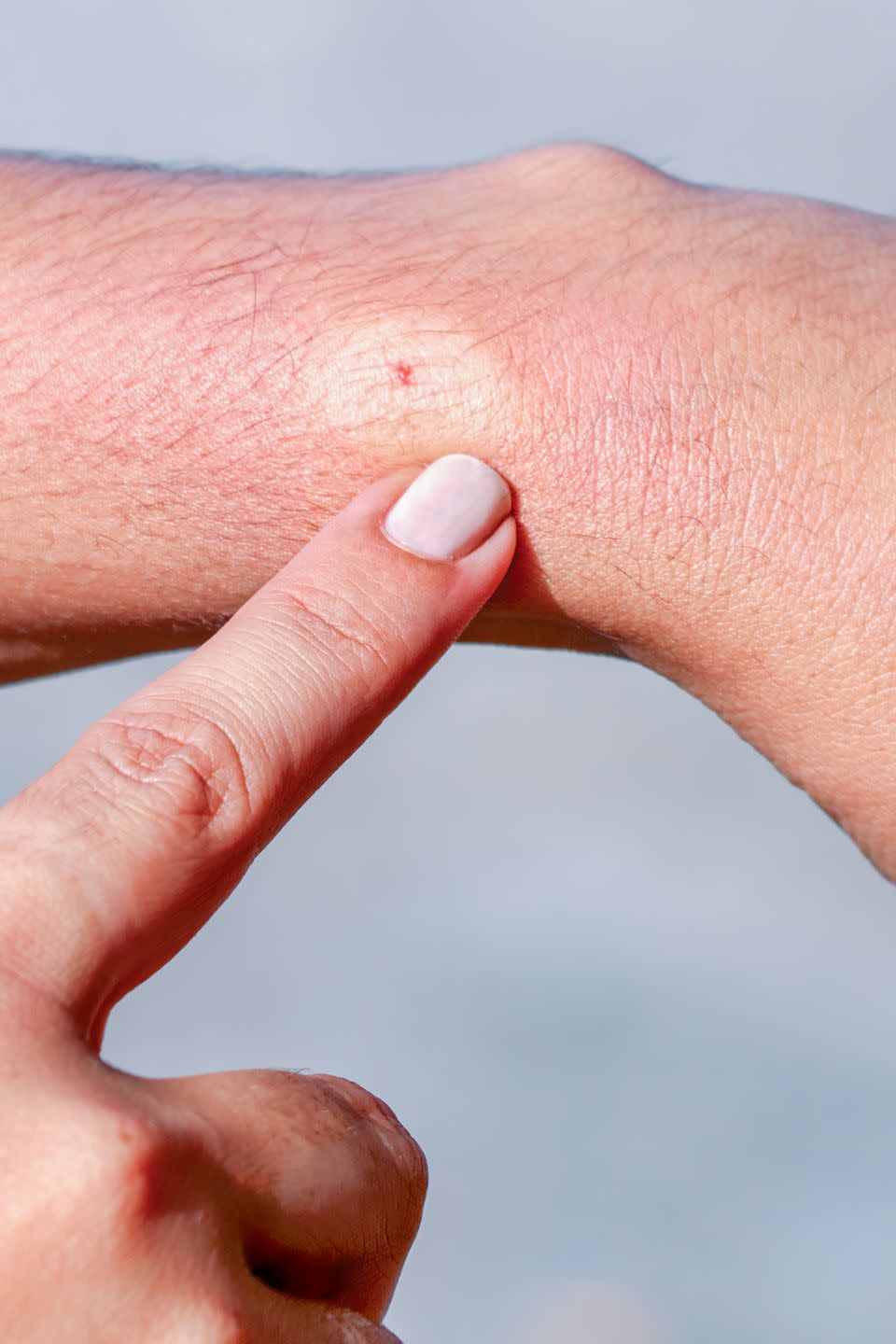
You Might Also Like

